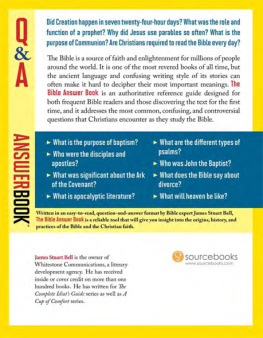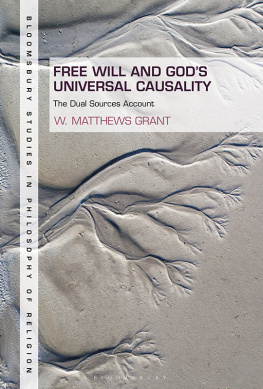Three Theological Mistakes
How to Correct Enlightenment Assumptions about God, Miracles, and Free Will
Ric Machuga
The Collapse of Mechanistic Philosophy
A small error at the beginning of something, said Thomas Aquinas, is a great one at the end. One such error is the common failure to distinguish between causation and predictability (i.e., determinism). While every action or event has a cause, most actions and events are not even in principle predictable. Our failure to make this distinction permits mechanistic philosophy to masquerade as science.
Time and Chance Happen to Them All
Common sense assumes a real difference between things that happen by chance and things that happen in a predictable or mechanical fashion. Things that happen by chance can only be described after the fact. Things that happen in a predictable or mechanical fashion can also be explained in terms of natural laws.
An ordinary tennis ball illustrates this difference. We can all predict that when we throw or hit a tennis ball across the net, it will soon hit the ground somewhere on the other side. An excellent tennis player can predict with pretty fair accuracy precisely where the tennis ball will land. And if the tennis ball is being shot out of a ball machine, any high school physics student could predict when and where the ball would land just by measuring the force imparted and the angle and direction in which the ball was aimed. Students today can do this because three centuries ago Isaac Newton discovered the mathematical laws of mechanics and gravity. Since these laws explain what is and isnt relevant to the motion of any given object, they allow us to predict what will happen.
More specifically, Newtons laws tell us that the mass of the ball, the force imparted, and the direction and angle it is aimed fully determine (and hence, predict) where and when the ball will land. Well, not exactly: if this were posed as a problem for college physics majors they might be asked to add factors such as air resistance and wind direction to their predictions. But because of Newton, they would never need to know the color of the ball, the time of day, whether the ball machine was manufactured in the United States or China, or countless other identifiable factors in the immediate proximity. Once we have accurately measured a handful of relevant factors, we have all the information necessary for an accurate prediction of where and when the ball will hit the ground.
Now let us change the situation slightly. Think of the same ball machine shooting the tennis ball down a fairly steep dirt road strewn with rocks, several switchbacks, and drop-offs. Once again, we can predict where the ball would first hit the ground. But where it would come to rest as it rolled and bounced down the road, perhaps careening over the edge of a rocky cliff, is an entirely different matter. This time a college degree in physics would be of little help. Why? It is not because there are gaps in the causal chain or other supernatural forces acting on the bouncing ball. No, the causal forces here are no different from those in the first situation.
The critical difference is that in the first example, a small error in the initial measurements will have a small consequence in the final outcome, whereas in the second example, a small error in the initial measurements will have an unpredictably large consequence. The difference between the two is that every rock and switchback in the second example constitutes a threshold or tipping point.
In the first example, a sudden gust of wind might cause the ball to land slightly to the left of our prediction, but it would not completely invalidate our prediction. However, in the second example, the tiniest of errors at the beginning of our calculations would totally invalidate our prediction. A tennis ball careening down an irregular, rocky dirt road is like a ball in a pinball machine. While there are no magical or mystical elements in either case, in both cases there are cascading chain reactions. If the tennis ball hits a rock or the pinball hits a pin ever so slightly to the right of center, one causal sequence will be initiated. But if it hits ever so slightly to the left of center, another entirely different sequence will emerge. In one case, it may send the tennis ball sharply to the left and then into a smooth culvert running all the way to the bottom of the road. But in another case, it may send the tennis ball sharply to the right and then over a cliff. And even if the ball only moves slightly to the right or left when it hits the first rock, each and every rock in the road constitutes a threshold or a tipping point just as capable of initiating a sequence of events with equally unpredictable results.
Contemporary scientists call these sorts of examples nonlinear systems. The name may be new, but the idea is ancient. If Tom and Harry are being chased by a bear and their only option is to leap twenty feet over a very deep chasm, and if Tom can jump precisely twenty feet, while Harry can jump precisely nineteen feet, eleven inches, this slight difference in jumping abilities will produce radically different resultsTom lives and Harry dies! When tennis balls are careening down mountain roads, the extremely large number of relevant factors (the precise location, size, and shape of every rock) coupled with numerous thresholds (nonlinear events) makes it humanly impossible to predict where the ball will come to rest. Yet, while it would be impossible to predict what happens in such cases, anyone with a good slow-motion camera could easily record, and then describe, every step in the cascading chain of events.
Of course, the unpredictability of a tennis ball bouncing down a rocky dirt road is of little significance. But the havoc caused to human plans by thresholds and tipping points is not always trivial. Here are two examples.
In the 1980 presidential election, Jimmy Carter was challenged by Ronald Reagan. During the campaign, Reagan and many others had repeatedly characterized Carters foreign policy as being weak and criticized him for being too willing to sacrifice our national honor when faced with challenges from abroad. The Iranian revolutionaries seizure of diplomatic hostages in Tehran became the prime example of Carters inaction and (apparent) weakness. And for many, it seemed to confirm everything Reagan was saying about Democrats.
However, we now know that Carter had set in motion a rescue mission and was only biding his time. By April of , American intelligence agents posing as European businessmen had infiltrated the ranks of the Revolutionary Guards holding the hostages, and they had detailed information about precisely where in the embassy the hostages were being held and other important information about their daily routines. There were even reports that some members of the Revolutionary Guards had been flipped (changed sides) and were ready and willing to assist the Americans in their escape.
On April , after all the groundwork had patiently been laid, Carter gave the order to begin the rescue. Though the carefully planned and practiced rescue would only require six helicopters to fly all the captives to safety, eight helicopters took off from an aircraft carrier just in case something went wrong. But even these precautions were insufficient. Shortly after takeoff, one of the eight helicopters developed a rotor problem and was forced to turn back. Halfway through the flight, the helicopters were caught in a haboob, a rare meteorological phenomenon in which winds generated by a thunderstorm create clouds of dense dust many miles away without any warning. This caused the loss of one more helicopter. Still, the mission had the six helicopters needed for a successful rescue, and success here would have made the wimp charge look ridiculous; all the negative predictions about Carters chances of reelection would be out the window. But success was not to be had. The mission was aborted when a hydraulic pump on one of the six remaining helicopters failedthe result of a crack in a ten-cent aluminum nut!











